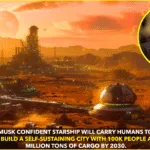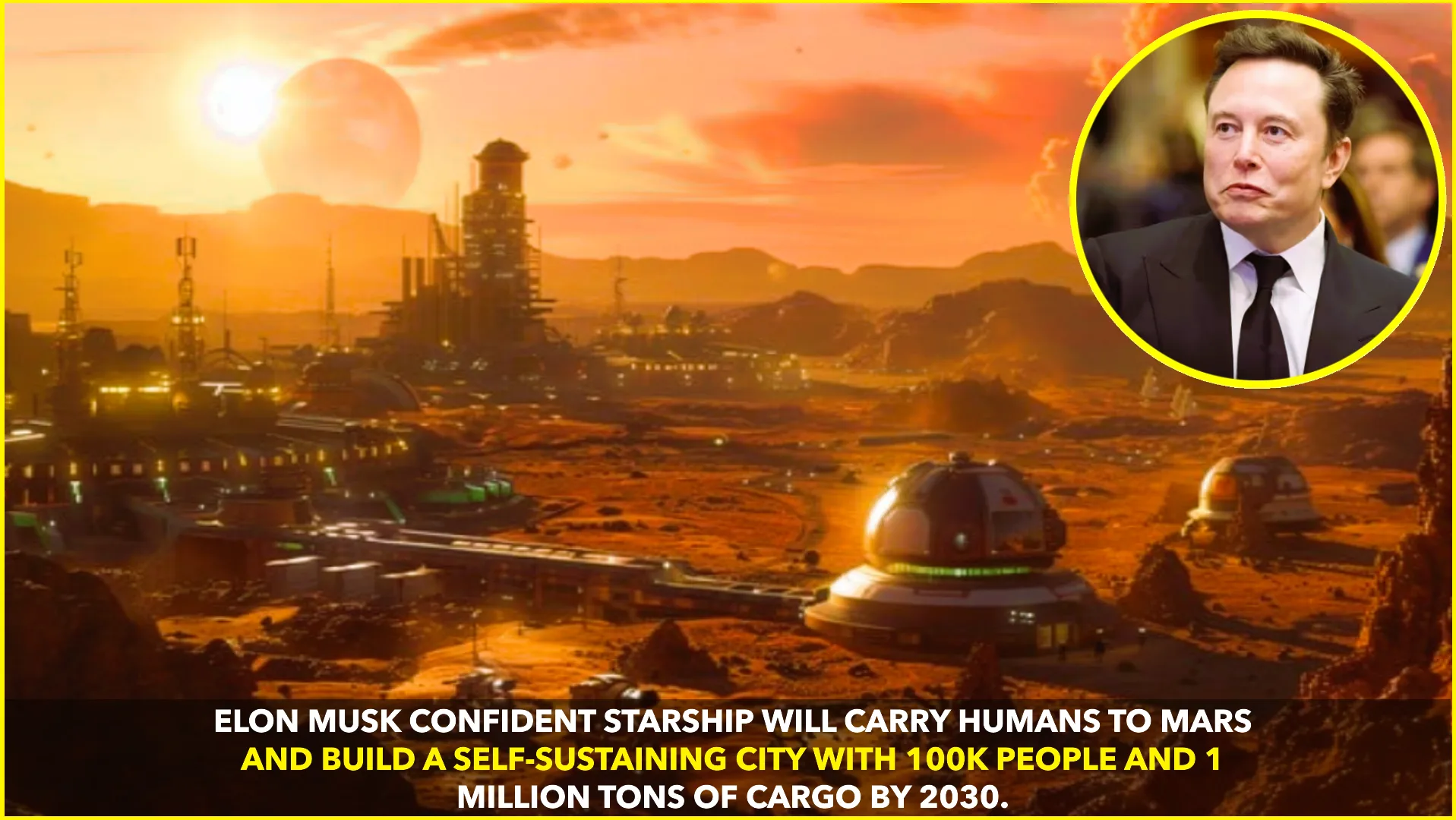STARSHIP TO MARS
Billionaire and SpaceX CEO Elon Musk has once again expressed confidence that his company’s Starship rocket will successfully transport humans to Mars — this time, with a clear long-term goal of building a fully self-sustaining colony on the Red Planet.
In response to a post on X (formerly Twitter), Musk said that creating a sustainable Martian civilization would require over 100,000 people and roughly 1 million tons of cargo. He stressed that ensuring “the future of consciousness” is more important than just sending a few astronauts. For Mars to truly thrive, it must be able to survive without support from Earth, he added.
These comments came soon after SpaceX released an updated mission timeline, detailing its ambitious plans for Moon and Mars missions scheduled for 2028 and 2030. The company also revealed that the payload cost for delivering cargo to Mars would be about $100 million per metric ton, reflecting the scale of investment needed to make the dream of human settlement a reality.
According to Benzinga, the updated plan highlights that Starship cargo flights to Mars are expected to begin in 2030, with the spacecraft capable of carrying unprecedented payloads thanks to its fully reusable design. (Source: Benzinga)
Next-Gen Starship: V3 and V4
In a series of posts, Musk also shared updates about the next iterations of the Starship vehicle — V3 and V4 models — both expected to feature larger designs and higher payload capacities. He revealed that test launches of Starship V3 are planned before the end of this year, setting the stage for an even more powerful launch system capable of interplanetary travel.
This announcement follows a string of successful sub-orbital tests conducted by SpaceX in Texas, which demonstrated the rocket’s improved heat-shielding, re-entry, and landing systems. According to Reuters, SpaceX aims to launch human missions as early as 2028, followed by larger colonization flights around 2030. (Source: Reuters)
The Vision Beyond Exploration
Musk’s long-term ambition goes far beyond a single Mars landing. He envisions building a “city on Mars” capable of producing its own food, energy, and materials. As per The Times of India, Musk said this self-sustaining city would likely take shape by the early 2030s, once regular Starship flights are established. (Source: Times of India)
He reiterated that this mission isn’t merely about exploration but ensuring humanity’s survival. “Becoming a multiplanetary species secures the future of consciousness,” Musk wrote, underscoring that a self-reliant Mars would act as a backup for civilization in case of catastrophic events on Earth.
Technological and Logistical Challenges
While Musk’s optimism inspires millions, experts caution that several critical technologies remain in early stages. According to Aerospace America, major hurdles include propellant transfer in orbit, landing heavy payloads on Mars, and developing in-situ resource utilization (ISRU) — the process of making fuel, oxygen, and water using Martian materials. (Source: Aerospace America)
The challenges are immense. For instance, landing a 100-ton Starship on Mars requires new aerodynamic systems and engines that can handle thin Martian air and extreme dust conditions. Furthermore, establishing life-support systems for thousands of colonists will involve advanced robotics, sustainable agriculture, and reliable energy storage — technologies that are still under active development.
Yet, despite these obstacles, SpaceX continues to make rapid progress. The company’s most recent Starship flight test successfully reached orbit and splashed down safely in the Indian Ocean after deploying several test payloads, demonstrating growing reliability. (Source: Associated Press)
A Giant Leap Toward the Future
As SpaceX refines its technology and timelines, Musk’s dream of turning humanity into a multiplanetary species appears more tangible than ever. His insistence on scaling up — from launching astronauts to moving massive cargo — reflects a shift from ambition to action.
Whether or not Musk meets his 2030 target, there’s no denying that Starship has already redefined space travel economics and reignited the global race for interplanetary exploration.
In Musk’s own words, “If humanity wants to survive long term, we must become a space-faring civilization.”










